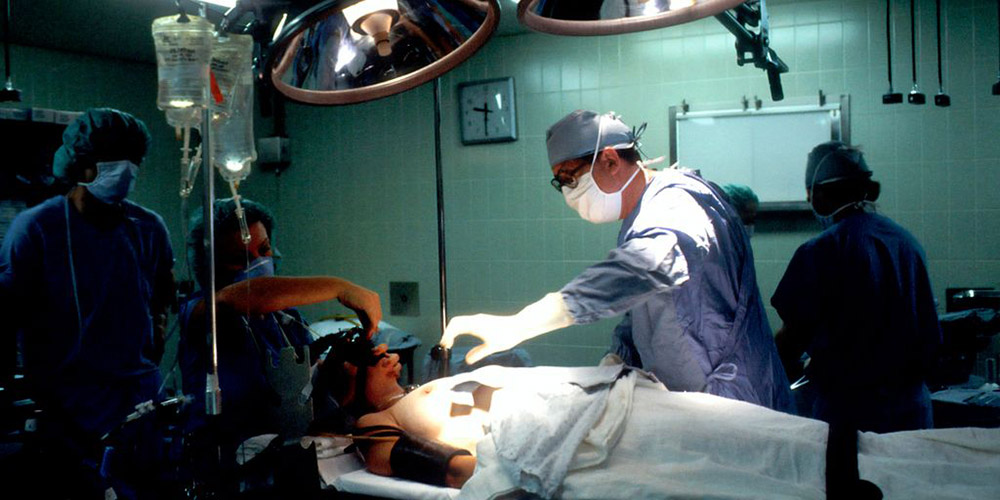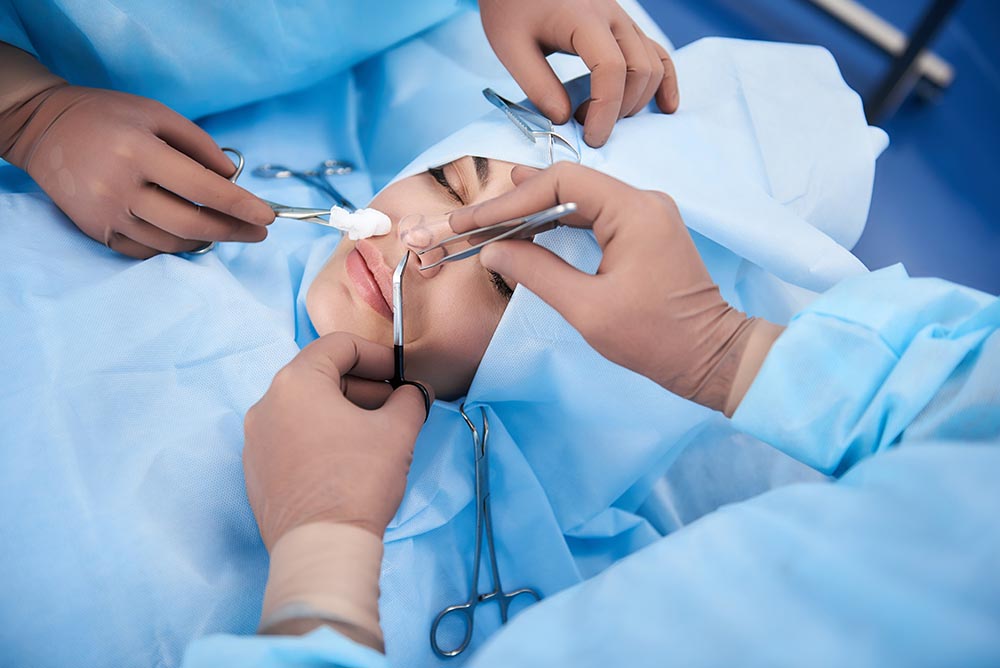Common Conditions Treated by Plastic Surgeons For Personal Injury

Plastic surgery plays a vital role in helping accident victims recover from their injuries. It not only restores physical appearance but also improves function and quality of life. This article will explore the common conditions treated by plastic surgeons for personal injury, highlighting the importance of these procedures for those who have suffered from accidents.
Key Takeaways
- Plastic surgery is essential for restoring both appearance and function after accidents.
- Common injuries treated include facial injuries, hand injuries, and severe burns.
- Reconstructive surgeries can significantly improve the quality of life for accident victims.
- Recovery from plastic surgery varies, but many patients can expect a gradual return to normal activities.
Facial Reconstruction After Accidents
Facial injuries are common after accidents, often requiring plastic surgery for accident victims. These injuries can result from blunt force trauma, cuts, or punctures. The midface area is particularly vulnerable, and many victims suffer multiple injuries. For instance, a person may sustain damage if their face strikes the steering wheel or windshield during a crash.
Common Facial Injuries Requiring Surgery
Injuries that may need surgical intervention include broken jaws, cheekbone fractures, and severe lacerations. The severity of these injuries can vary based on the type of accident and the force involved. Reconstructive surgery after personal injury is essential to restore both function and appearance.
Techniques Used in Facial Reconstruction
Surgeons often use various techniques to repair facial injuries. They may utilize tissue from other body parts or implants to reconstruct damaged areas. This process is crucial for restoring a natural look and function. The goal is to minimize scarring and improve the victim’s quality of life.
Recovery Process and Expectations
The recovery process can be lengthy and may involve physical therapy. Patients should expect some swelling and discomfort initially. However, with proper care and rehabilitation, many individuals can achieve significant improvements in their appearance and function. Understanding the recovery timeline is vital for setting realistic expectations for patients undergoing facial reconstruction.
Hand and Upper Extremity Injuries
Types of Hand Injuries Treated
Hand injuries can occur from various incidents, including Car Accident Injuries, Motorcycle Accident Injuries, Slip and Fall Injuries, and Workplace Injuries. These injuries often involve fractures, lacerations, and soft tissue damage. Reconstructive hand surgery is essential for restoring function and appearance after such injuries.
Surgical Procedures for Hand Reconstruction
Surgeons employ various techniques to repair hand injuries. These may include internal fixation for fractures, tendon repair, and skin grafting for severe lacerations. The goal is to restore both function and aesthetics, ensuring that patients can return to their daily activities.
Post-Surgery Rehabilitation
After surgery, rehabilitation is crucial for recovery. Patients typically undergo physical therapy to regain strength and mobility. The recovery process can vary, but with proper care, many individuals can achieve significant improvements in hand function and quality of life.
Burn Injury Treatments
Degrees of Burns and Their Treatments
Burn injuries can vary in severity, classified into three main degrees: first, second, and third. First-degree burns affect only the outer layer of skin, causing redness and minor pain. Second-degree burns penetrate deeper, leading to blisters and more intense pain. Third-degree burns are the most severe, damaging all layers of skin and possibly affecting underlying tissues. Treatment for these burns often involves specialized care to promote healing and prevent infection.

Skin Grafting and Tissue Expansion
For severe burns, skin grafting is a common procedure. This involves taking healthy skin from another part of the body and placing it over the burned area. This helps in healing and reduces scarring. Tissue expansion may also be used, where a balloon-like device is inserted under the skin to stretch it gradually. This technique allows for more skin to be available for grafting, improving the outcome of the repair.
Long-Term Care for Burn Victims
Long-term care for burn victims is crucial for recovery. Patients may require ongoing physical therapy to regain mobility and function. Emotional support is also important, as burn injuries can lead to psychological challenges. Addressing these needs is essential for a complete recovery and helps victims adjust to changes in their appearance and lifestyle.
Scar Revision and Management
Types of Scars Addressed by Plastic Surgeons
Plastic surgeons often deal with various types of scars, including those from injuries, surgeries, or burns. Scar revision aims to improve the appearance of these scars and restore skin function. Surgeons assess the scar’s characteristics and the surrounding skin to determine the best approach for treatment.
Surgical and Non-Surgical Treatments
There are both surgical and non-surgical options for scar management. Surgical methods may include techniques like skin grafting, where healthy skin is moved to cover the scarred area. Non-surgical treatments can involve laser therapy or topical treatments that help reduce scar visibility. Each method is chosen based on the scar’s type and location.
Reconstructive Surgery for Orthopedic Injuries
Reconstructive surgery plays a vital role in treating injuries sustained from accidents. This type of surgery aims to restore function and appearance to damaged bones and joints. It is often necessary for individuals who have experienced severe injuries, such as fractures or dislocations, that affect their mobility and quality of life.
Common Orthopedic Injuries from Accidents
Orthopedic injuries can vary widely, but they often include complex fractures and soft tissue damage. These injuries may require specialized care from orthopedic surgeons who are skilled in reconstructive techniques. The goal is to ensure that patients regain their strength and functionality, allowing them to return to their daily activities.
Surgical Techniques for Bone and Joint Repair
Surgeons utilize various techniques for bone and joint repair, including internal fixation, which involves using plates and screws to stabilize fractures. Additionally, procedures like joint replacement may be necessary for severe cases. The expertise of orthopedic surgeons is crucial in determining the best approach for each individual case, ensuring optimal recovery outcomes.
Rehabilitation and Physical Therapy
After surgery, rehabilitation is essential for recovery. Patients typically engage in physical therapy to strengthen their muscles and improve mobility. This process can be challenging, but it is vital for achieving the best possible results. With proper care and dedication, many individuals can return to their normal activities and enjoy a better quality of life after their injuries.

Addressing Soft Tissue Damage
Identifying Soft Tissue Injuries
Soft tissue injuries are common after accidents. These injuries can involve muscles, tendons, and ligaments. Recognizing these injuries early is crucial for effective treatment. Symptoms may include swelling, bruising, and pain. Medical professionals assess the extent of the damage through physical examinations and imaging tests.
Surgical Interventions for Soft Tissue Repair
When injuries are severe, surgical intervention may be necessary. Surgeons use various techniques to repair damaged tissues. This can include suturing torn muscles or reattaching ligaments. In some cases, skin grafts may be used to cover large wounds. The goal is to restore function and appearance to the affected area.
Recovery and Complications
Recovery from soft tissue surgery varies by individual. Patients often undergo rehabilitation to regain strength and mobility. Complications can arise, such as infections or delayed healing. Understanding these risks is important for patients as they navigate their recovery journey. Additionally, pre-existing conditions can complicate recovery, making it essential to discuss any health issues with the surgeon.
Dealing with Complex Wounds
Types of Complex Wounds
Complex wounds can arise from various injuries, including accidents and surgical complications. These wounds often involve significant tissue loss and may require specialized care. Plastic surgeons play a crucial role in managing these injuries to promote healing and restore function.
Advanced Wound Care Techniques
Plastic surgeons utilize advanced techniques to treat complex wounds. They may employ methods such as skin grafting, where healthy skin is transplanted to cover the wound. Additionally, microsurgery can be used to reconnect blood vessels and nerves, ensuring proper blood flow and sensation in the affected area.
Role of Plastic Surgery in Wound Management
Plastic surgery is essential in the management of complex wounds. Surgeons assess the wound’s condition and determine the best approach for treatment. They aim to minimize scarring and improve the overall appearance of the wound. Effective wound management can significantly enhance a patient’s recovery and quality of life.
Conclusion
Plastic surgery can be a vital part of the recovery process for individuals who have suffered injuries in an accident. While often associated with cosmetic procedures, plastic surgery can also be used to repair damage, restore function, and reduce pain. From facial reconstruction to scar revision, our network of board-certified plastic surgeons can address a wide range of injuries. If you’re an attorney seeking a qualified plastic surgeon for your client, Surgeons On A Lien can help. With our extensive database of board-certified plastic surgeons, we’re committed to connecting you with the right specialist to ensure optimal outcomes for your clients. Contact us today to learn more about how our services can benefit your case.
Frequently Asked Questions
What is the role of plastic surgeons in treating accident injuries?
Plastic surgeons help fix injuries from accidents, especially on the face and hands. They use special techniques to make people look and feel better after getting hurt.
How long does it take to recover from plastic surgery after an accident?
Recovery time can vary. Most people start feeling better in a few weeks, but full recovery might take several months depending on the surgery.
What types of injuries can plastic surgery fix?
Plastic surgery can repair facial injuries, hand injuries, burns, and scars from accidents. It helps people regain normal function and appearance.
Are there risks involved with plastic surgery?
Like any surgery, plastic surgery has risks, including infection, bleeding, and scarring. It’s important to discuss these with your doctor.
What can I expect during the recovery process?
After surgery, you may have swelling and pain, but your doctor will provide instructions for care. Following these will help you heal properly.